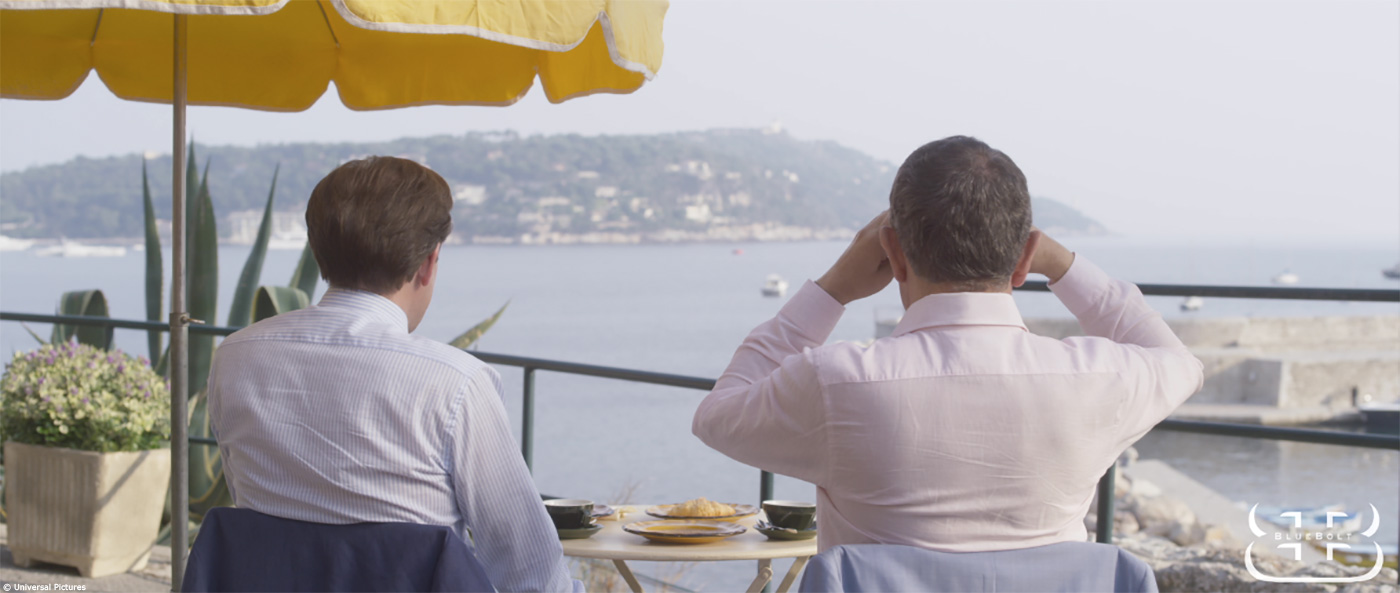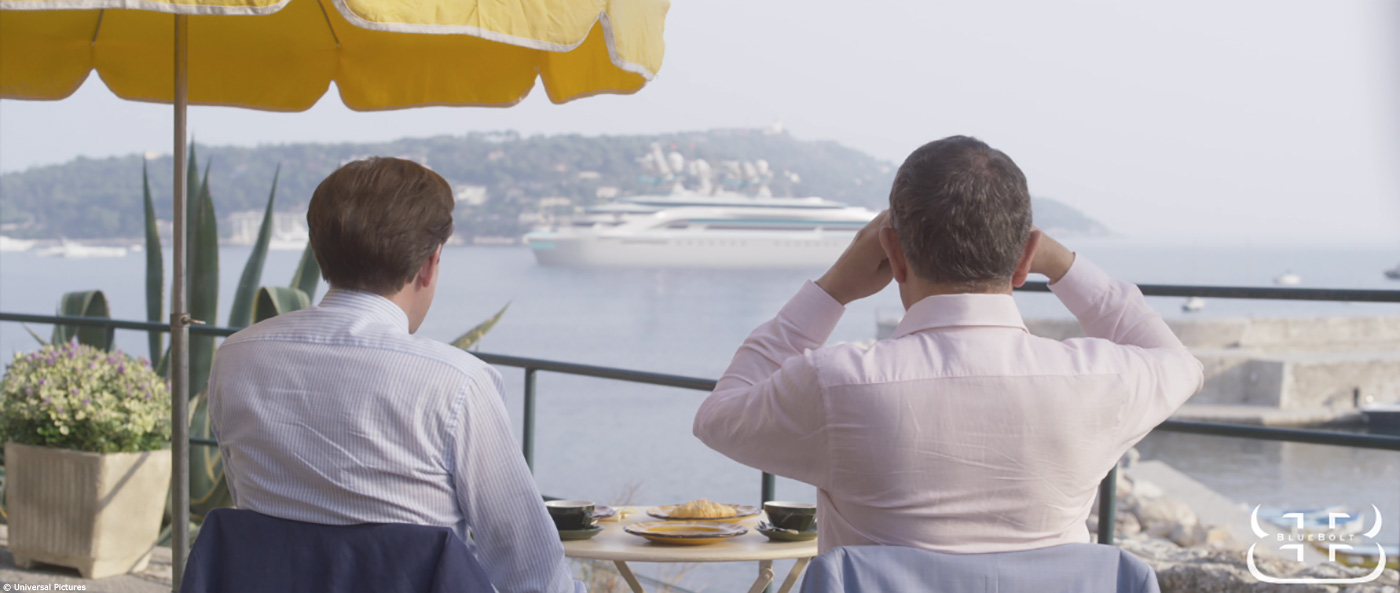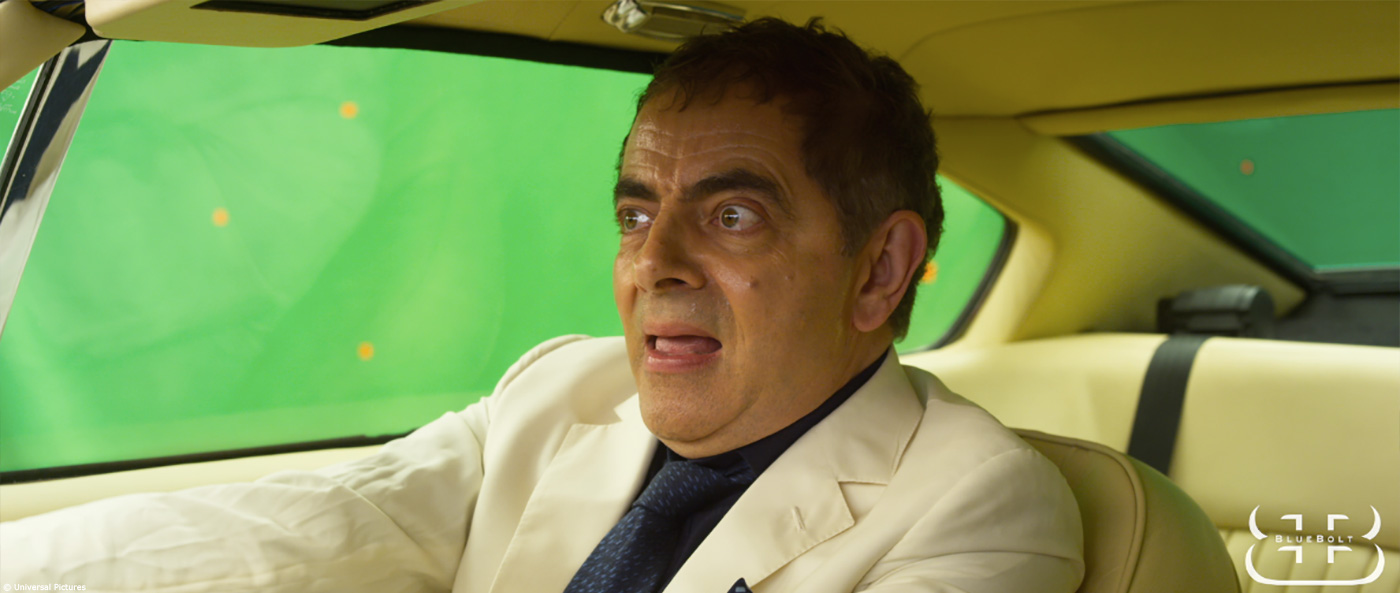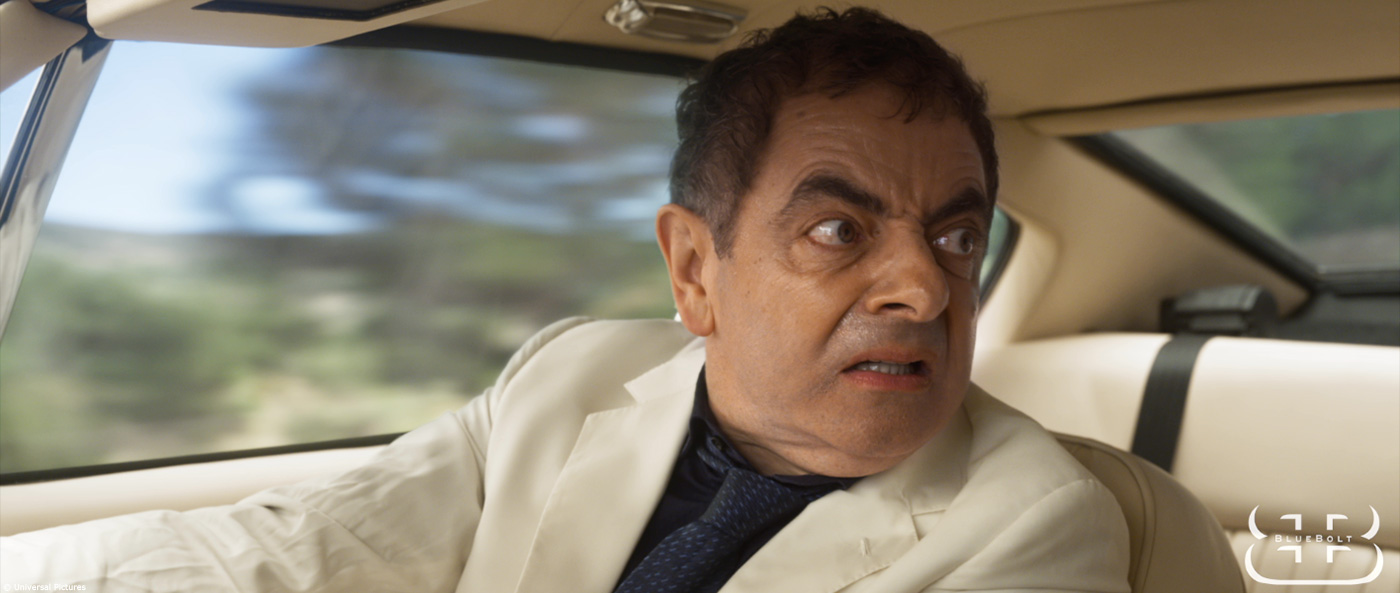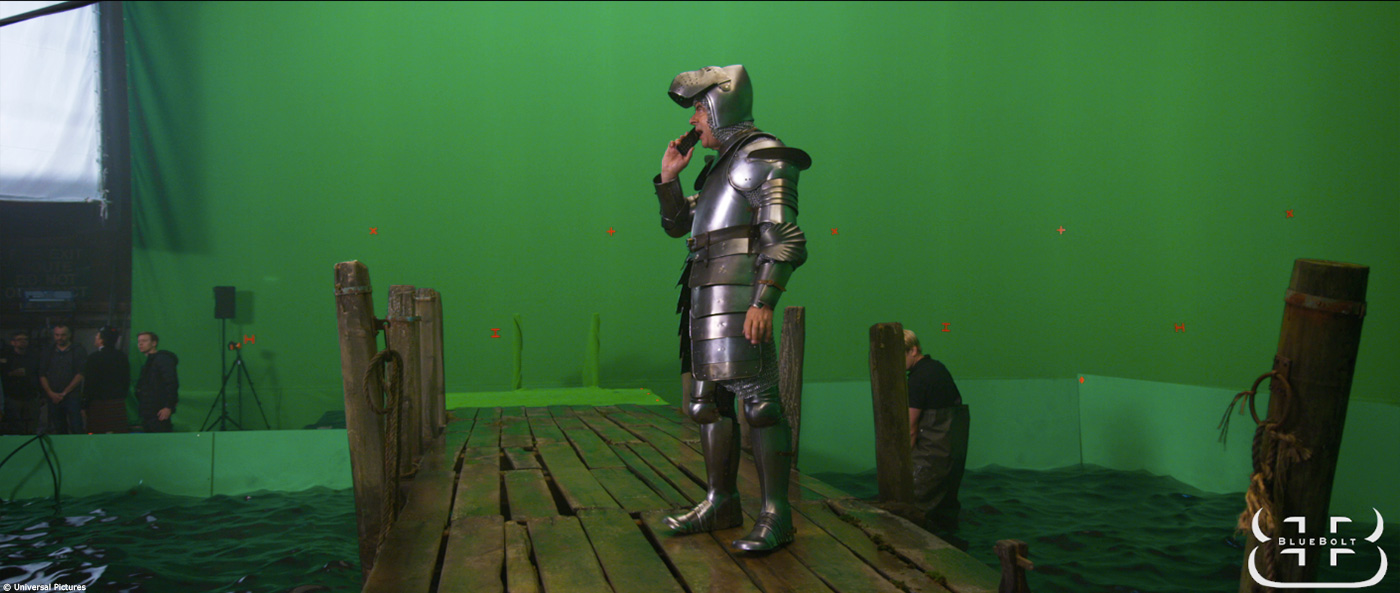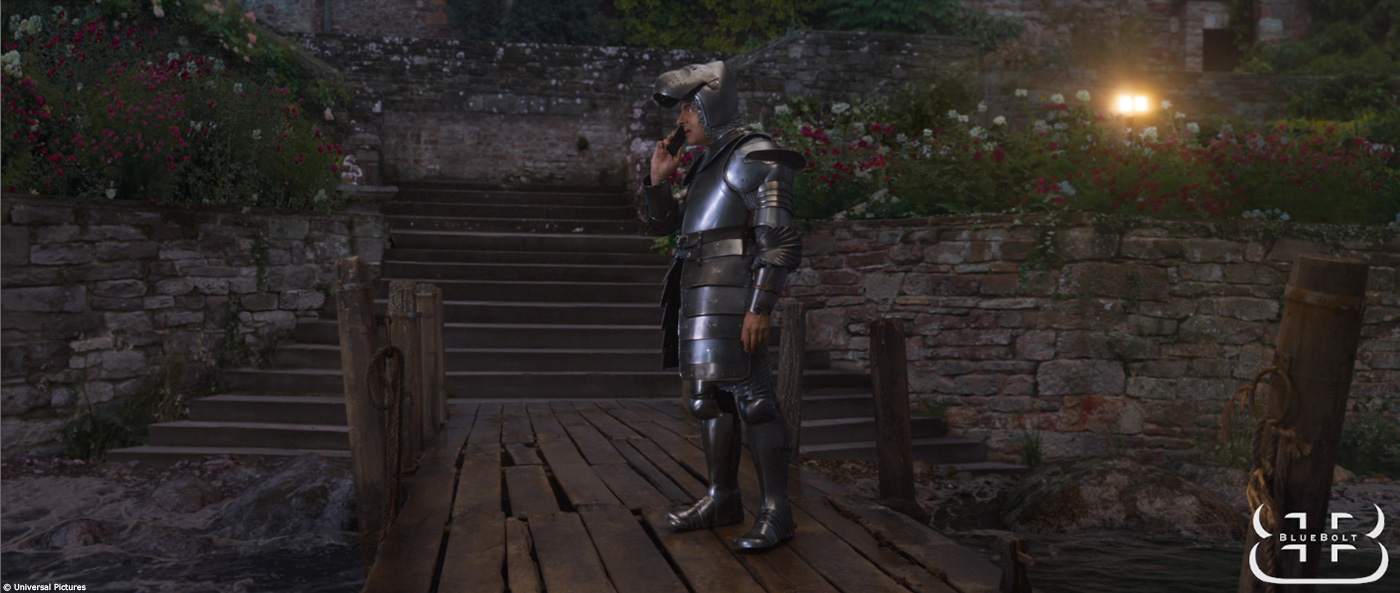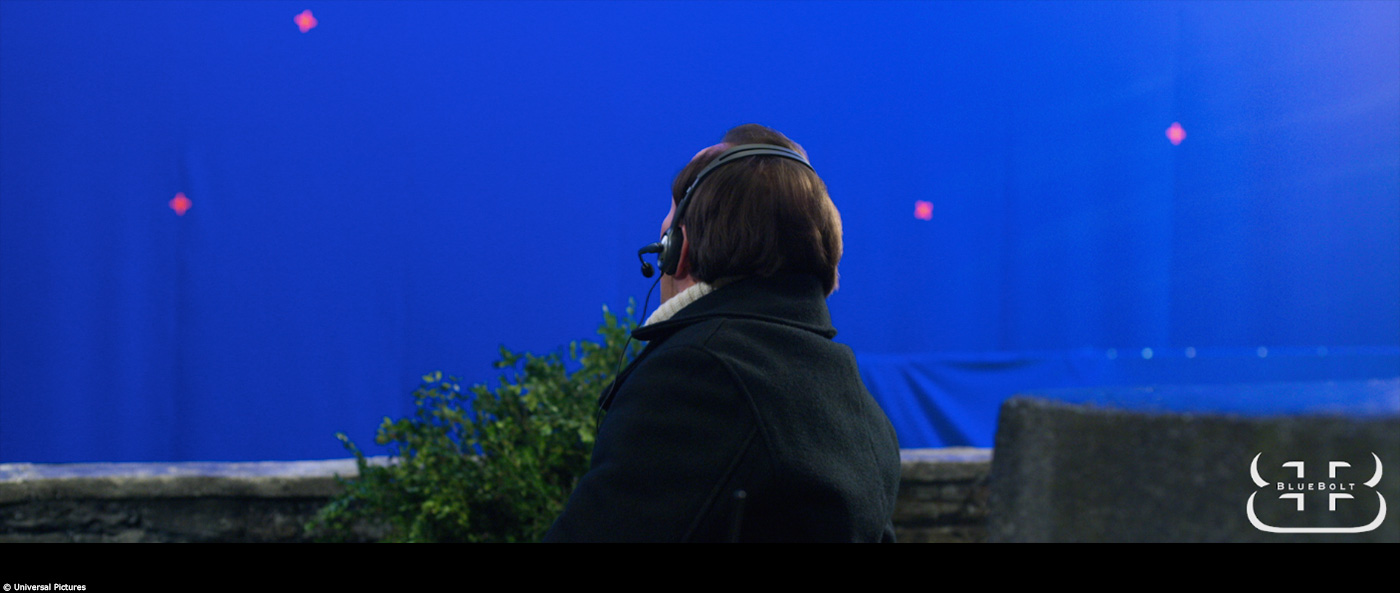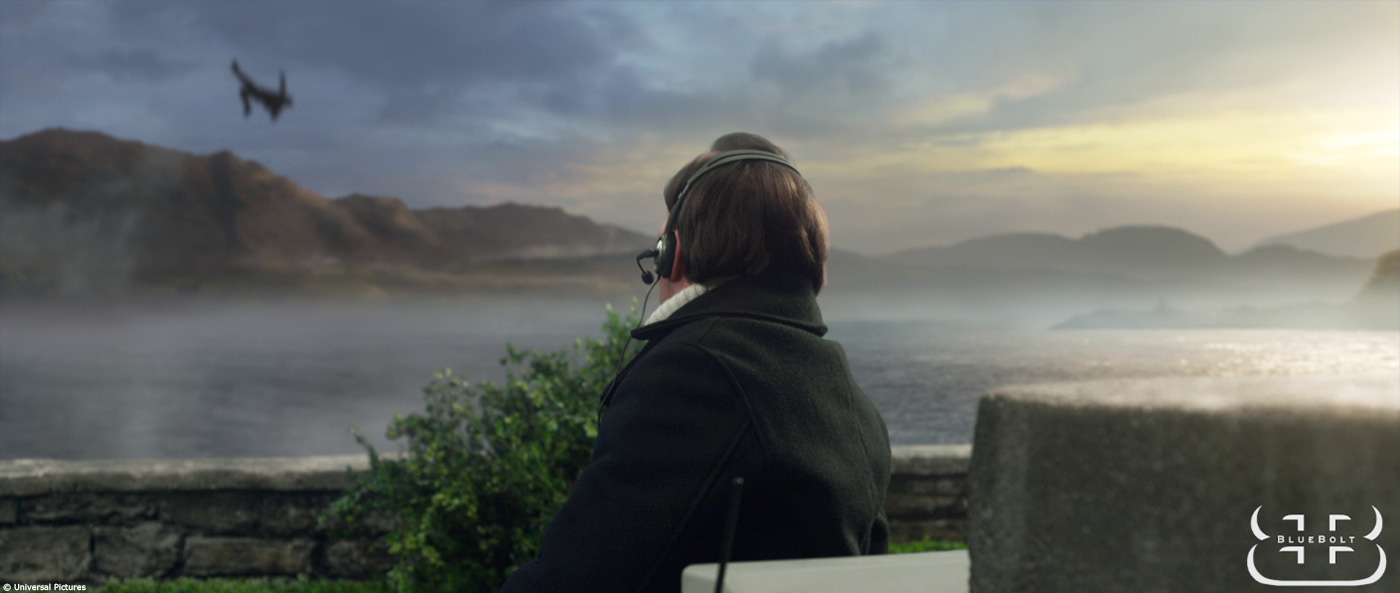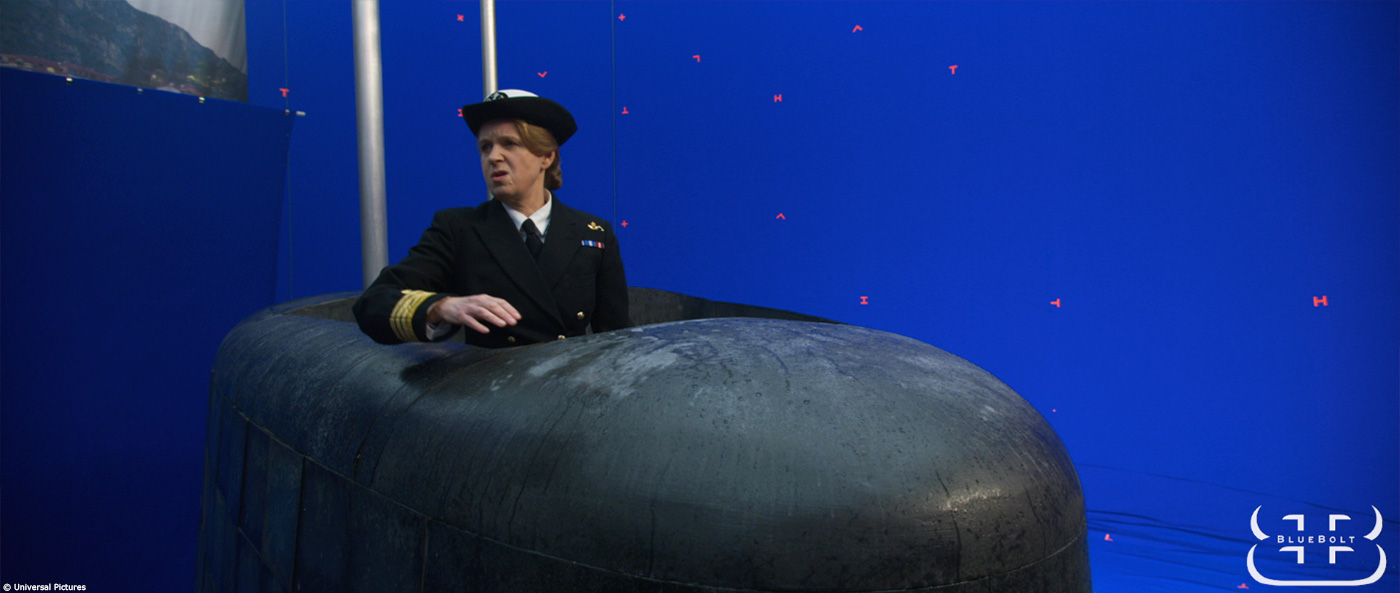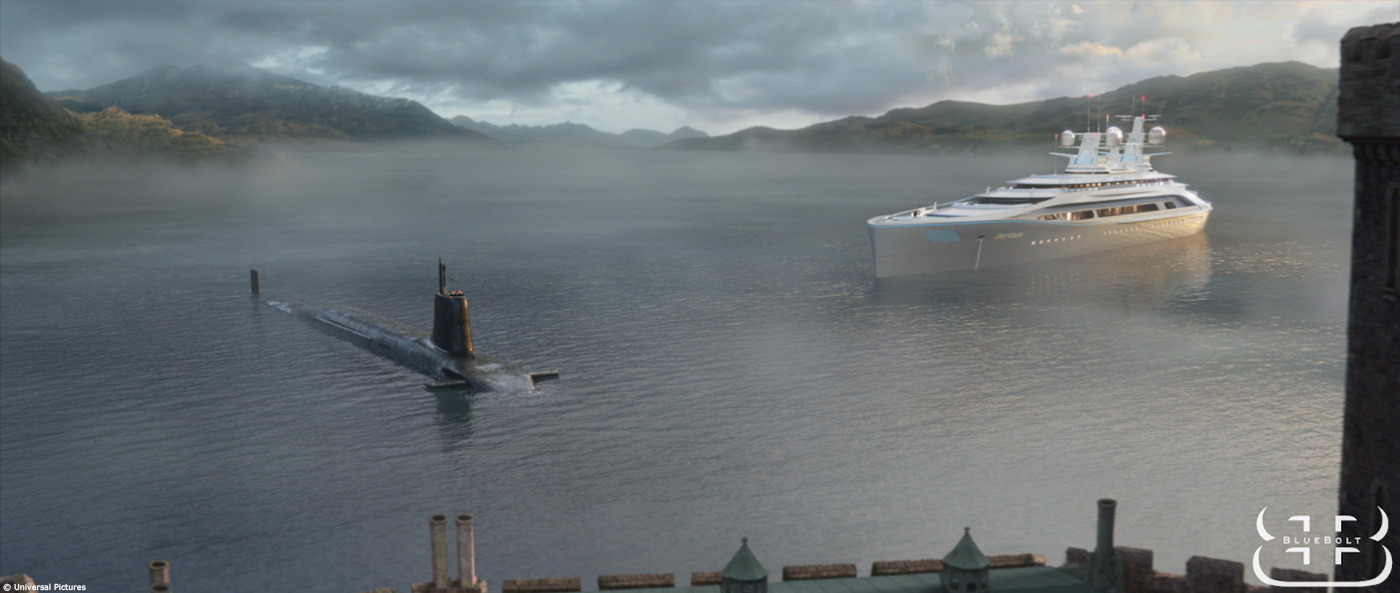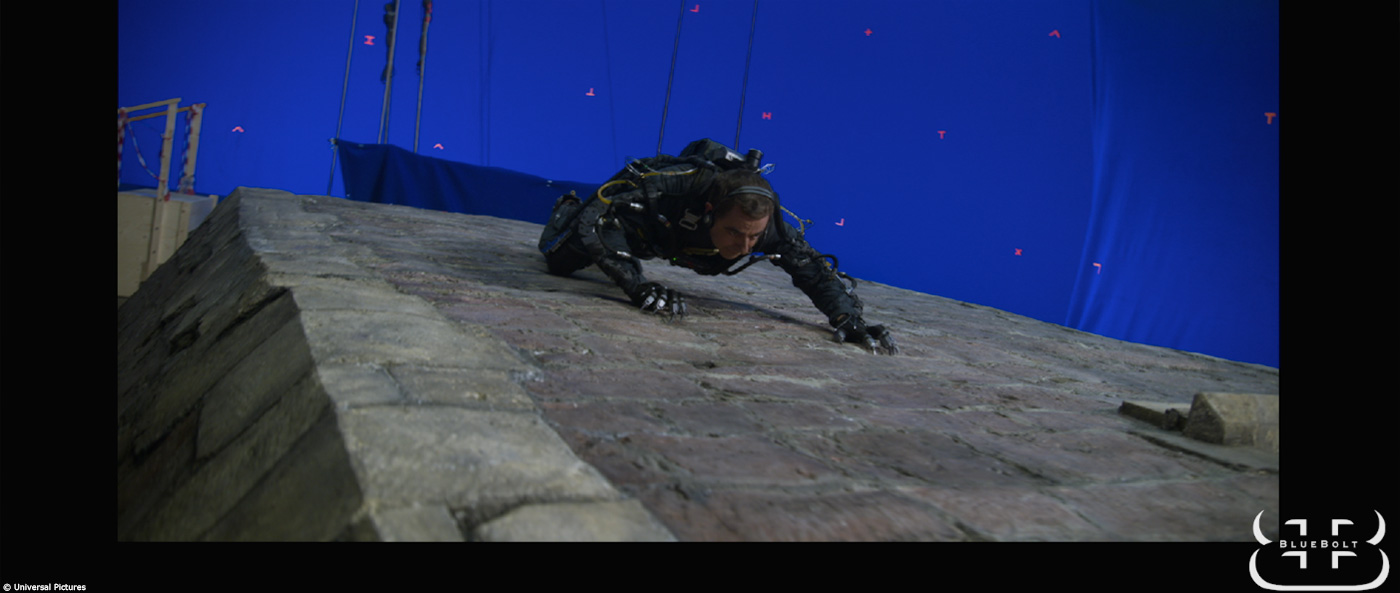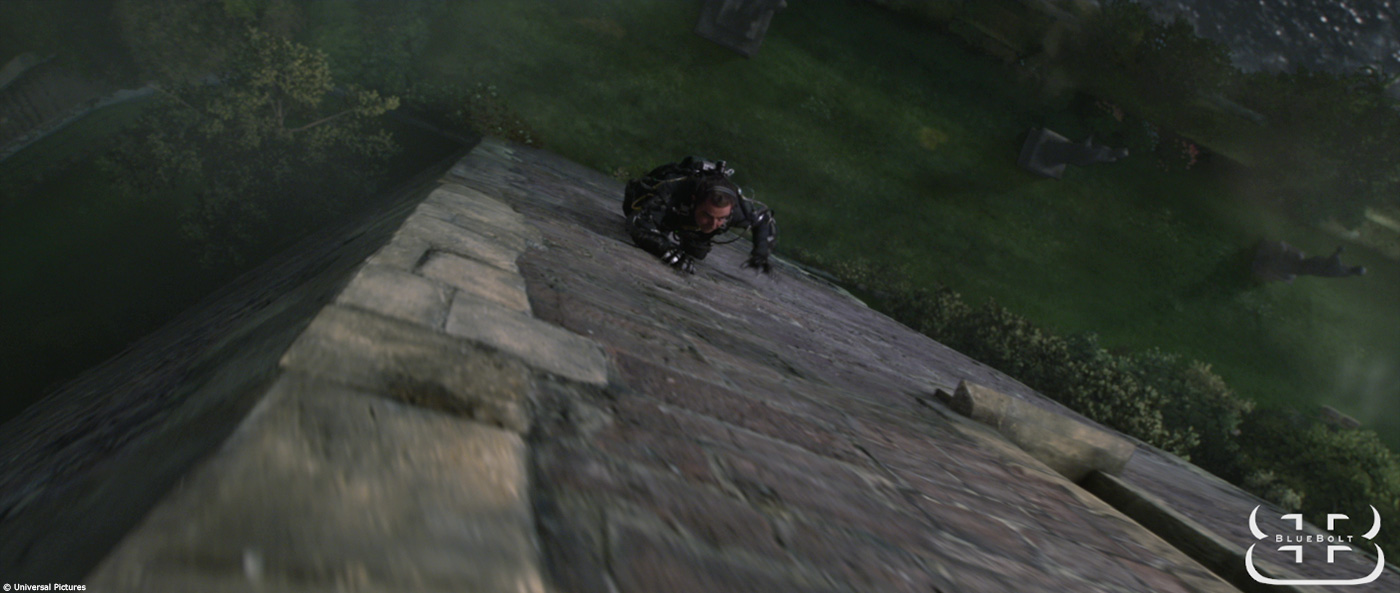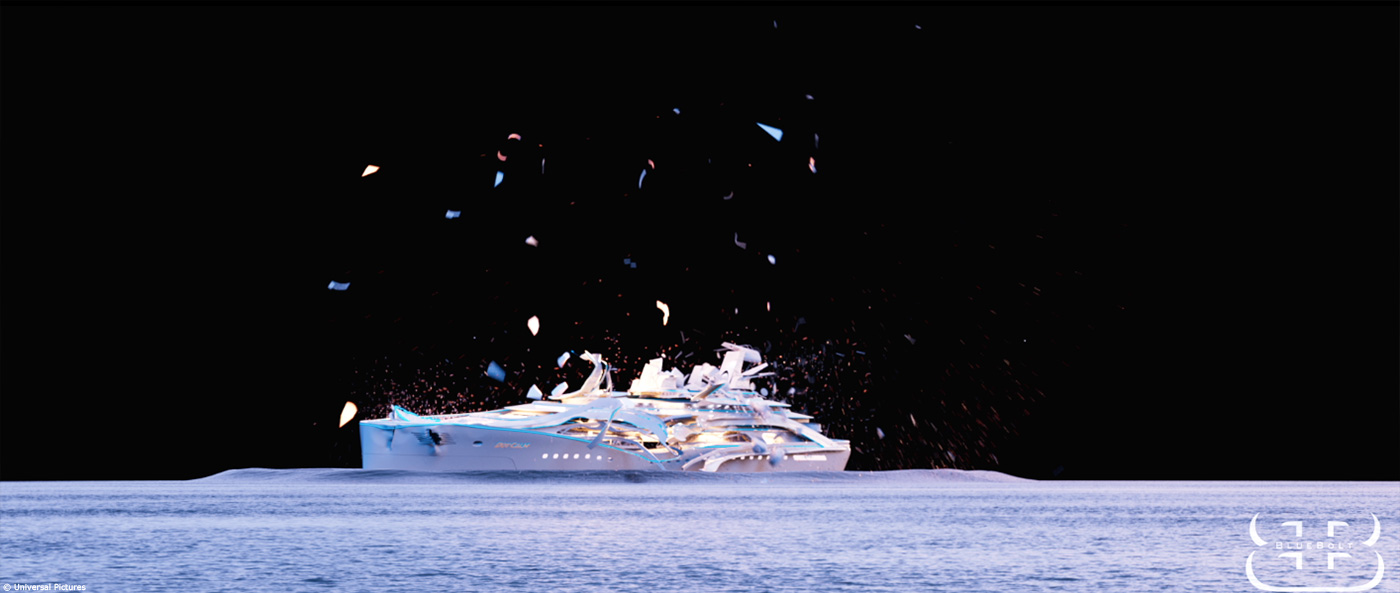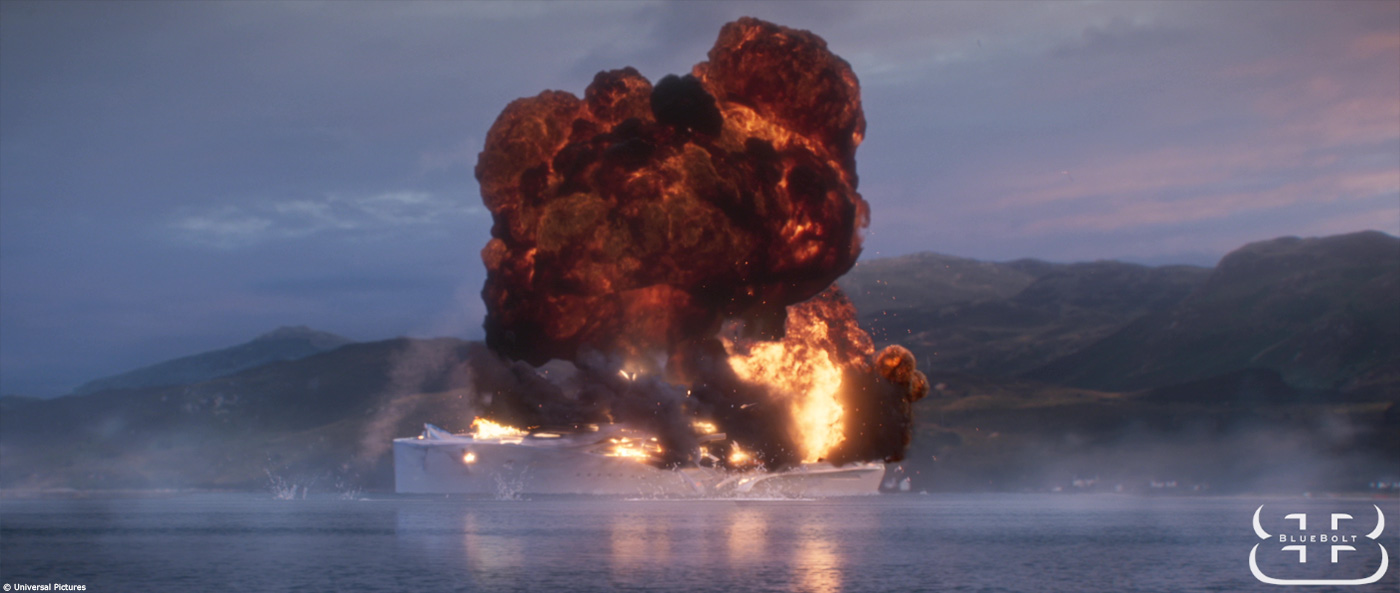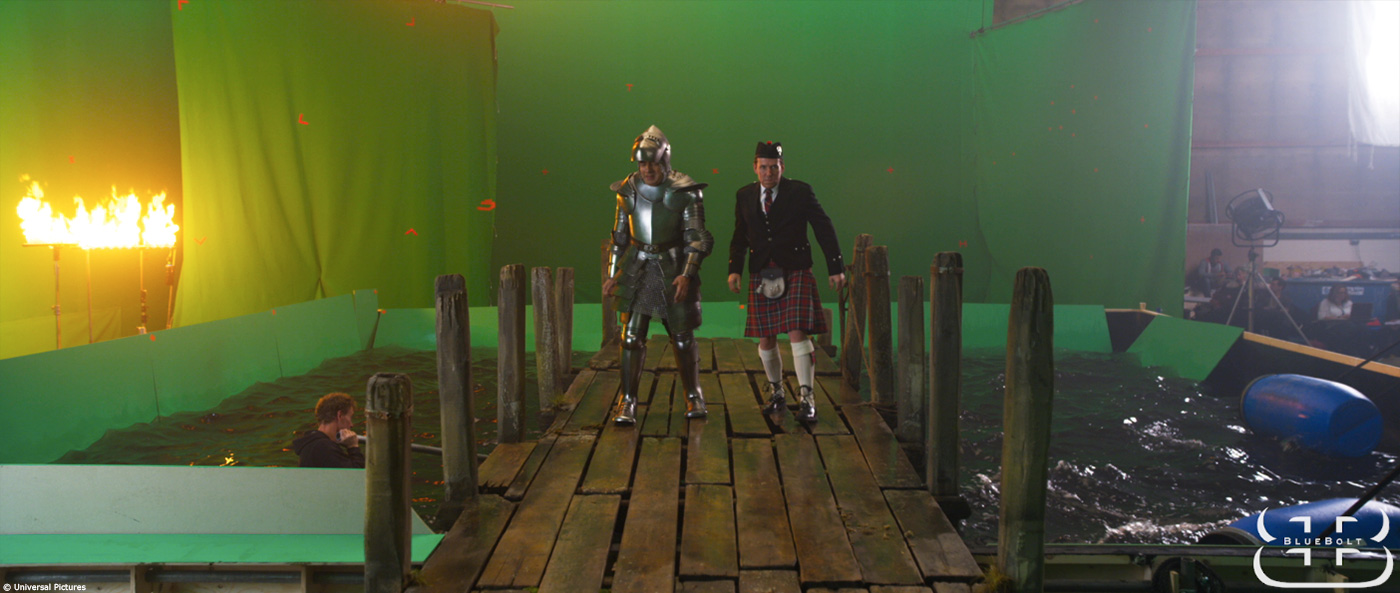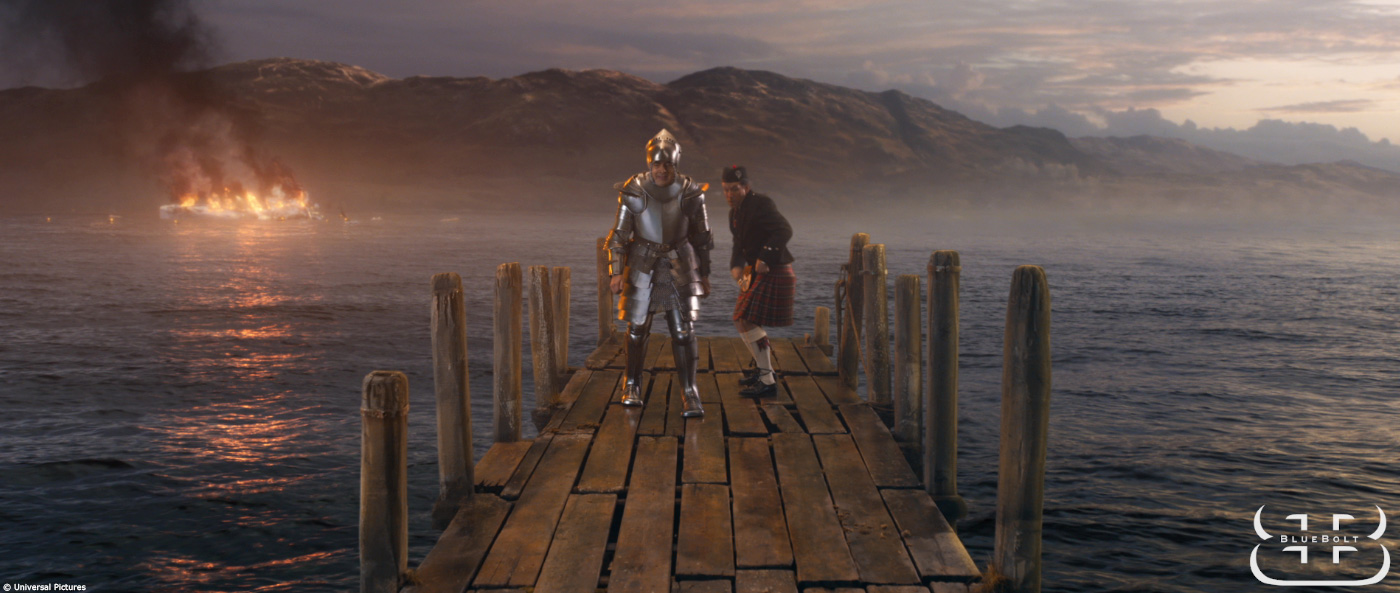In 2015, Angela Barson told us about BlueBlot‘s work on THE MAN FROM U.N.C.L.E.. She then worked on films such as SPECTRE, NOW YOU SEE ME 2, WAR MACHINE and ENTEBBE.
How did you get involved on this show?
We had just completed all the VFX work on 7 DAYS IN ENTEBBE for Working Title, so we were approached by them about JOHNNY ENGLISH STRIKES AGAIN whilst the show was in Pre-Production.
How was the collaboration with director David Kerr?
We worked closely with David and Rowan throughout the project to ensure that we understood their creative direction from the start. They each brought a different approach to work, so it was great to watch their creative efforts combine with the VFX. They wanted the VFX to be seamless, but it was always the comedy which was the most important.
How did you organize the work with your VFX Producer?
The VFX producer and supervisor were both from BlueBolt, so we had a lot of input over the organisation of the work. We worked very closely with the Post Production Supervisor, Ann Lynch, to plan the turnover of shots. We prioritised ‘hero shots’ in the sequences that needed look development or CG asset builds, so we could establish the look of the VFX and get early approval. This meant we knew what was required in CG when the remaining shots were turned over.
Can you tell us more about the previz and postviz work?
One of the first shots we mapped out during Pre-Production was the reveal of the Submarine arriving at the castle, with the Dot Calm yacht before Johnny and Bough ‘covertly’ row towards the castle. Timing was everything with this shot as we found out. David had a desired framing of the three subjects (submarine, yacht and castle), so it was a continuous tug-of-war approach to create a CG camera that captured everything in frame within an appealing cut duration.
There were several fully CG shots of the yacht which had to be postviz-ed in order to sign off on framing, camera and timing. There were several iterations of these as they had to be continuously checked in the edit and updated until everyone was happy.
A lot of the shots with Johnny and Bough at the base of the tower were shot against bluescreen so there were various rounds during Post where we were developing different looks for the Loch and sky, so we could create the ‘golden hour’ feel that David was after and an environment that would cover all angles looking away from the castle. This was a full-CG environment, using 2.5D DMP and a large library of reference photos.
How did you work with the SFX and stunts teams?
There is always a lot of collaboration between VFX and SFX, as well as VFX and stunts. Wherever possible, everything would be done in camera, with VFX taking over when this wasn’t possible. Most of the stunts were achieved in camera with minimal help from VFX with wires and crash mats.
SFX and VFX spent a lot of time planning what would be practical and where VFX would take over. Even for the fully CG shots of the yacht exploding, we shot some practical SFX elements to use in the comp.
Which stunt was the most complicated to enhance and why?
The most complicated stunt to enhance in Post had to be Johnny get flung out of the tower window from Volta’s suite. The speed at which he was pulled back was key to the comedy in this sequence and required some manipulation.
Can you explain in detail about the creation of the Dot Calm boat?
A section of the main deck at the rear of the yacht was built on stage, so we had a practical look to match to. We did a full CG build of the yacht, which took around 10 weeks to complete. It was based on a concept model by Production Designer, Simon Bowles, and his Art Department. We also had the helpful addition of a Lidar scan from the set build for the rear of the boat, which we incorporated into our asset.
The most challenging part of the asset was making a shiny new 100 meters mega-yacht look real without using the usual CG tricks of adding dirt and grunge. It took several rounds of R&D to work the asset into the original plates, especially with the bright blue light around the rim of the boat frame and water line. Also the scale of it made the submarine and the castle look small, which required wrangling some of the viewpoints.
How did you create the ocean?
The water was a combination of water plates that were shot on location and FX using Maya and Houdini. As the water plates were shot prior to the foreground plates, we found ourselves continuously adapting and improving our FX set up to embed our larger CG assets and Live-action plates into one world.
There is a car chase sequence in the mountains. How did you shoot the background elements?
For the driving sequences, we used a three-camera array set up to shoot the background elements. We would cover a long section of the location to give us flexibility with the elements in Post, which often required extensive re-speeding.
Can you tell us more about the creation of the submarine?
The Submarine was another full CG asset we created for the show. One of the first things we discussed during the Pre-Production was the gag of the missile launch/ Yacht destruction, so we immediately started to look which Nuclear Submarines were active in the British Navy and went from there.
There was a practical set build for the top section of the Conning Tower where you see Johnny and Bough look out at the castle towards the end of the film, which was captured as a Lidar scan and integrated into the asset. The texture shoots from the set would then inform the base for the look of the Submarine and we developed the rest of the textures in Photoshop to create a wet look for the Submarine.
How did you create the castle where the final sequence take place?
The castle is based on Berkeley Castle in Gloucestershire, as if transported to the Eilean Donan Castle location in Scotland. We filmed at Berkeley Castle for a week, using it mainly for interiors and the courtyard scenes. Any exterior shots had to have the water and Scottish environment added in CG. We did a full texture shoot and Lidar of the castle, which was used to extend and manipulate the castle for the exterior shots.
There were 3 separate studio castle sets for different areas – the jetty, the base of the tower and a side garden. All of these different pieces had to be brought together in post.
The result was a mix of the real castle, the set builds, a 3D build with extensive DMP work, CG water and CG/DMP mountains based on the Scottish location.
Can you explain in detail about the FX work for the missile and the Dot Calm explosion?
The explosion was achieved by starting with the biggest and best looking real explosion we could find, and supporting it with multiple FX passes of debris, shattering windows, smoke, fire, splashes and some hand animated mangled yacht panels and comms equipment falling in the water. In addition there was the missile, its smoke trail, and the deforming water surface of the Loch. Whenever possible, real elements were mixed in with CG.
Which sequence or shot was the most complicated to create and why?
The night time infiltration of the Dot Calm was particularly difficult: combining the set build of a small section of the yacht hull with our yacht model was very difficult as it was a smooth, shiny, curved surface. Finding a balance in lighting between something realistic and something with desired visibility was also difficult.
What is your favourite shot or sequence?
The 360 degree tower climb was both one of the trickiest individual shots and one of our favourites in the end. The trickiest part was the respeed which caused artefacts and made the matchmove more difficult. And then of course there was the full 360 degree CG environment.
What is your best memory on this show?
Seeing the final result on the big screen was by far the biggest reward on a challenging show like this. But having been a fan of his comedy growing up, seeing Rowan Atkinson in his element on-set was my best memory of the project.
How long have you worked on this show?
From Pre-Production through to Final delivery in Post, we were working on the show for a total of 14 months.
What’s the VFX shots count?
We ended up with a shot count of 526 VFX shots.
What was the size of your on-set team?
We had a team of three on-set data wranglers during the shoot, plus a VFX supervisor throughout. In-House, we went up to a team of 40 artists working on the show, including Supervisors and Leads.
What is your next project?
BlueBolt has a mixture of exciting TV and Features coming up, including CATHERINE THE GREAT for HBO and The Ink Factory’s upcoming TV adaptation of THE LITTLE DRUMMER GIRL, directed by Park Chan-Wook.
A big thanks for your time.
JOHNNY ENGLISH STRIKES AGAIN – VFX BREAKDOWN – BLUEBOLT
WANT TO KNOW MORE?
BlueBolt: Dedicated page about JOHNNY ENGLISH STRIKES AGAIN on BlueBolt website.
© Vincent Frei – The Art of VFX – 2019


